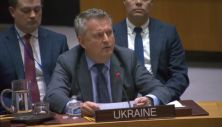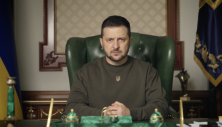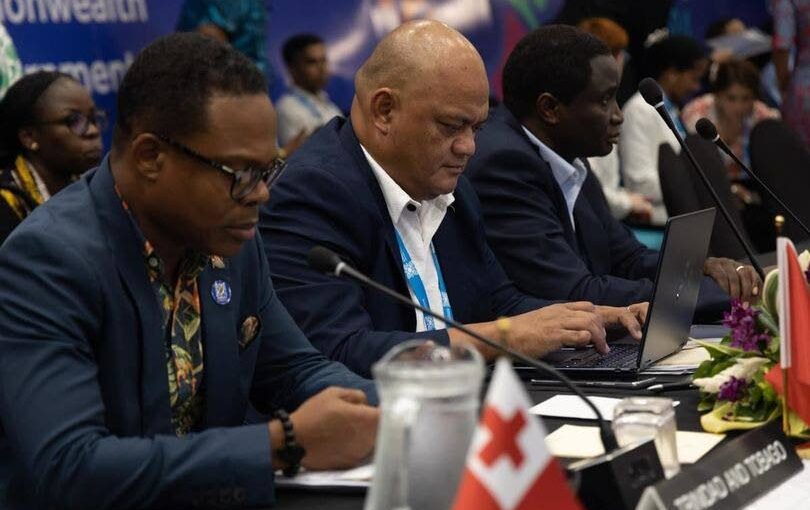Russia's dependence on North Korean arms and manpower exposes myths about Moscow's "might", according to Sergiy Kyslytsya, Ukraine's Permanent...
Vous n'êtes pas connecté
- English
- Français
- عربي
- Español
- Deutsch
- Português
- русский язык
- Català
- Italiano
- Nederlands, Vlaams
- Norsk
- فارسی
- বাংলা
- اردو
- Azərbaycan dili
- Bahasa Indonesia
- Հայերեն
- Ελληνικά
- Bosanski jezik
- українська мова
- Íslenska
- Türkmen, Түркмен
- Türkçe
- Shqip
- Eesti keel
- magyar
- Қазақ тілі
- Kalaallisut ; kalaallit oqaasii
- Lietuvių kalba
- Latviešu valoda
- македонски јазик
- Монгол
- Bahasa Melayu ; بهاس ملايو
- ဗမာစာ
- Slovenščina
- тоҷикӣ ; toğikī ; تاجیکی
- ไทย
- O'zbek ; Ўзбек ; أۇزبېك
- Tiếng Việt
- ភាសាខ្មែរ
- རྫོང་ཁ
- Soomaaliga ; af Soomaali
Rubriques :
 Maroc - NEWSDAY.CO.TT - A la Une - 24/Aug 06:51
Maroc - NEWSDAY.CO.TT - A la Une - 24/Aug 06:51
What would our ancestors want?
Dara E Healy I WONDER how the Indigenous peoples in our nation, descendants of the Taino, Warao, Kalinago, Nepuyo and others, must feel about witnessing the debates about the removal of the ships of Christopher Columbus from our coat of arms? These vessels of death, disease and greed almost completely decimated their civilisation. I wonder if the bones of the Banwari shiver in the cold winds of tunnel vision that blow over their humble graves. I get it. In announcing a change to our coat of arms, we the citizens were not afforded the courtesy of discussion before implementation. Further, as the bloodied body of five-year-old Anika Guerra (most likely a member of my extended family) calls for justice, many are asking, how does this decision address rampant crime? How does it confront the inequities that linger from the very colonial past we are struggling to overcome? In our multi-ethnic space, the challenges of the past always seem to be staring us in the face. Some remind that the coat of arms is everywhere – on buildings, stationery and our currency. Changing it will require time and, undoubtedly, considerable expense. In reality, the very concept of a coat of arms has nothing to do with us at all. This form of identification first appeared in the Middle Ages in Europe “as a means of identifying warriors in battle and tournaments.” In fact, records indicate that the purpose was to highlight nobles and others of a particular elite. Identification later became associated with sports for the wealthy, exclusiveness and glamorous danger. Today, some countries choose to retain a coat of arms that speaks to the core story of their nation. In Dominica, the crest includes references to black volcanic soil, bananas, a crapaud and a canoe. Cuba’s features a royal palm tree, representing the fertility of the land, as well as a laurel branch and an oak branch symbolising peace and victory. The Haitian one recalls its history with symbols such as a palm tree, cannons and a hat of freedom. There is also a broken chain link and the motto L’Union Fait La Force: Strength through Unity. The aftermath of George Floyd’s murder saw renewed attention to the symbols, statues and buildings that celebrated people who were not aligned to modern understandings of freedom and equity. In Bristol, England, protesters defaced the plaque on a statue of Edward Colston, writing an "R" and a "J" in front of the word "erected" to make the inscription read "rejected" by the citizens of Bristol. In South Africa, students and staff of the University of Cape Town protested for the removal of a statue of Cecil Rhodes. At home, the statue of Columbus in Port of Spain was defaced with red paint to remind of his role in the bloodshed of thousands. He did not only open the door to enslavement and murder of Indigenous peoples here. In former Hispaniola, now Haiti and the Dominican Republic, it is said that in just two generations, Columbus and his people caused the reduction of the Indigenous Taino from about 250,000 to a few hundred. Sanctioned by the papal bull of 1493 and with the blessings of the king and queen of Spain, Ferdinand and Isabella, Columbus was given the "authority" to discover and claim new lands, convert inhabitants to Catholicism, extract precious minerals, and keep ten per cent of whatever he found for himself. As we discuss how our country should move forward, it is important to emphasise that the tragedies of the past are not so far removed from our lived experiences. The recent exercise on constitutional reform showed that citizens are clear about the gaps in our society and the steps that need to be taken to rectify these. Decolonisation is necessary to allow us to attain this higher vision of ourselves. Key to this process is an overhaul of how we educate our citizens. We the people must have a real stake in TT. This is what Hyarima wanted as he led Indigenous peoples into battle for freedom, it is what the Jahaji fought for when they defied colonial bullets, and it is why the enslaved never stopped their campaign of resistance and revolution. Let us go about it in a way that honours the warriors of our past. This is the only way to achieve true freedom in our collective future. It is what the ancestors would want. Dara E Healy is a performing artist and founder of the Indigenous Creative Arts Network – ICAN The post What would our ancestors want? appeared first on Trinidad and Tobago Newsday.
Articles similaires
Georgia’s ruling party wins parliamentary elections – Western reaction, President Zurabishvili calls on citizens to protest
Today, October 27, Georgian President Salome Zurabishvili refused to recognize the results of the parliamentary elections in the country and...
Georgia’s ruling party wins parliamentary elections – Western reaction, President Zurabishvili calls on citizens to protest
Today, October 27, Georgian President Salome Zurabishvili refused to recognize the results of the parliamentary elections in the country and...
Five years of beauty and innovation! Base Coat by Barr. Neya Kalu continues to redefine elegance in Nigeria.
Celebrating five incredible years, Base Coat has emerged as a shining star in Nigeria’s beauty industry—a brand that has set new benchmarks for...
Ikare celebrates Olokemeji festival as Owa-Ale urges cultural preservation for future generations
Indigenes of Ikare Akoko, both at home and abroad, gathered over the weekend in Ondo State to celebrate the 2024 Olokemeji Tako-Tabo Festival in...
Ukraine Now Needs to Develop the Internal Strengthening Plan, Which Will Also Guarantee Unity – President’s Address
I wish you health, fellow Ukrainians! Today, our Crimea Platform, its parliamentary dimension, is in session. I am grateful to Ruslan Stefanchuk...
Browne unfazed by push-back on reparations
DR AMERY BROWNE, Minister of Foreign and Caricom Affairs, is undaunted by the negative signals coming from the United Kingdom regarding calls by...
The values of Divali
DINESH RAMBALLY THE THEME of this year’s Divali Nagar was "Grihastha Ashram," one of the stages in the life of Hindus. In Hinduism there are four...
Indigenous Australians managed fire risk better says new ANU research
Ancient cultural burning practices carried out by Indigenous Australians limited fuel availability and prevented high intensity fires in southeastern...
As our U.S. neighbours prepare to vote
The first time I flew overseas, I remember wondering whether I had flown beyond the reach of God. We had, quite literally, risen on the wings of the...
Les derniers communiqués
-
Aucun élément








